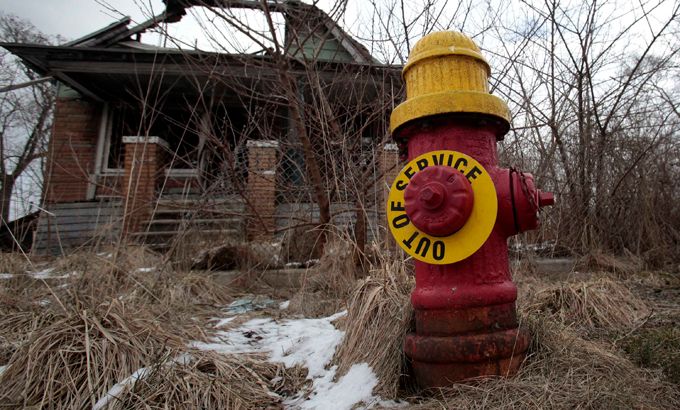Detroit official says bankruptcy only option
Emergency manager Kevyn Orr says there was no other way to rescue city from $18.5bn debt following decades of decline.

Detroit’s emergency manager has defended the move to file for bankruptcy after decades of decline and mismanagement rendered the city insolvent.
On Thursday, Detroit became the largest city in the history of the United States to file for bankruptcy.
Keep reading
list of 4 itemsBoeing hit with 32 whistleblower claims, as dead worker’s case reviewed
US imposes new sanctions on Iran after attack on Israel
A flash flood and a quiet sale highlight India’s Sikkim’s hydro problems
The city’s emergency manager, Kevyn Orr, said they were left with no other options.
| The rise and fall of Detroit |
|
1899/1903: The city becomes the cradle of the US car industry, dubbed “Motor City.”
1950: With a population of 1.8 million, Detroit is the fourth largest US city.
1967: On July 23 riots break out in which 43 people are killed, hundreds are injured and 2,000 buildings are destroyed.
2000s: The rate of those living in poverty, at 26 percent, is twice the national level.
2007/2008: Car industry goes through a painful restructuring in which tens of thousands lose their jobs.
2013: (March) Governor Rick Snyder appoints an emergency manager with a background in bankruptcy to restructure the city’s finances.
2013 (June) Detroit stops making payments on some of its $18.5 bn of debt and obligations.
2013 (July) Detroit becomes the largest city in US history to file for bankruptcy protection.
Source: AFP
|
“I’d be happy to listen to any other plan someone can come up with given the restraints that we’re working under,” he said during a live news conference on Friday.
“The reality is that with $12bn that we’re working with in unsecured debt there’s precious little we can do.
“As I’ve said time and again, bankruptcy is a tool in our tool box to get at the goals that we want to achieve.
It gives us breathing room.”
Orr said that the decision would improve the city’s cash flow, leading to an increased standard of service for Detroit’s citizens.
“In freeing up the cash flow it allows us to focus on the key issue that the governor has re-iterated again and again and again, the health, safety and welfare of 700,000 citizens in the city of Detroit,” he said.
“There are 700,000 citizens who don’t deserve a 55 minute rapid response time, who don’t deserve endemic blight and crime, who don’t deserve no hope and future and just continued debt over debt and borrowing.”
‘No other option’
Michigan’s governor, Rick Snyder, said on Thursday that there was no other option to tackle the city’s $18.5bn of debts.
“This is a situation that’s been 60 years in the making in terms of the decline of Detroit.
“From a financial point of view, let me be blunt, Detroit is broke,” Snyder said in a video on the state’s official website.
Snyder also made a statement that accompanied the bankruptcy file.
“The fiscal realities confronting Detroit have been ignored for too long,”
“The only feasible path to a stable and solid Detroit is to file for bankruptcy protection.”
The filing puts the city on an uncertain course that could mean laying off municipal employees, selling assets and scaling back already threadbare basic services.
| Economics expert discusses Detroit’s bankruptcy |
Detroit stopped making payments on some of its debt and obligations last month as Orr sought relief from creditors.
But the city’s employee pension plans – which are owed $9bn – filed a lawsuit to prevent any cuts to retirement benefits.
That case is now on hold as a federal judge determines if Detroit is allowed to restructure – and even shed – its obligations in what is known as a “Chapter 9” bankruptcy.
Decline and debt
Snyder listed a number of problems that Detroit’s financial situation had exacerbated.
The murder rate is the highest in nearly 40 years. Police response times to call-outs average 58 minutes, compared with an average of 11 minutes nationwide.
There are 78,000 abandoned buildings in the city, and 40 percent of street lights do not work.
A lack of funds for maintenance and repairs means only a third of the city’s ambulances work, and police cars and fire trucks are also in poor condition.
About 38 cents of every city dollar was going to debt repayment and obligations such as pensions, and that was projected to hit 65 cents in the dollar by 2017.
The city’s tax rate has reached its legal limit.
Orr’s team said Detroit was defaulting on about $2.5bn in unsecured debt to “conserve cash” for police, fire and other services. In recent months, the city has relied on state-backed bond money to meet the payroll for its 10,000 employees.